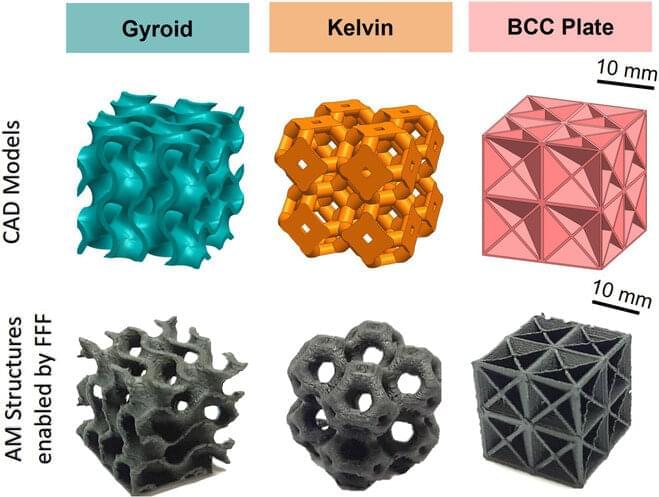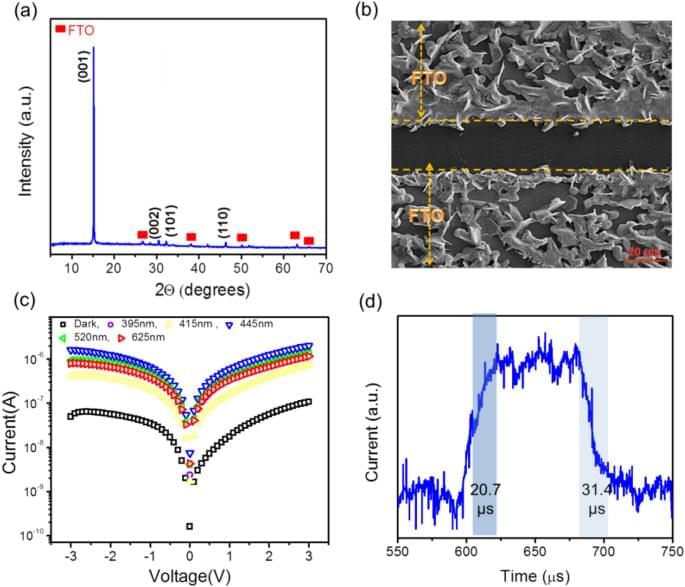New evidence suggests RNA and peptides may have helped build each other on early Earth.



Algorithm set for deployment in Japan could identify giant temblors faster and more reliably.
Two minutes after the world’s biggest tectonic plate shuddered off the coast of Japan, the country’s meteorological agency issued its final warning to about 50 million residents: A magnitude 8.1 earthquake had generated a tsunami that was headed for shore. But it wasn’t until hours after the waves arrived that experts gauged the true size of the 11 March 2011 Tohoku quake. Ultimately, it rang in at a magnitude 9—releasing more than 22 times the energy experts predicted and leaving at least 18,000 dead, some in areas that never received the alert. Now, scientists have found a way to get more accurate size estimates faster, by using computer algorithms to identify the wake from gravitational waves that shoot from the fault at the speed of light.
“This is a completely new [way to recognize] large-magnitude earthquakes,” says Richard Allen, a seismologist at the University of California, Berkeley, who was not involved in the study. “If we were to implement this algorithm, we’d have that much more confidence that this is a really big earthquake, and we could push that alert out over a much larger area sooner.”
Scientists typically detect earthquakes by monitoring ground vibrations, or seismic waves, with devices called seismometers. The amount of advance warning they can provide depends on distance between the earthquake and the seismometers, and the speed of the seismic waves, which travel less than 6 kilometers per second. Networks in Japan, Mexico, and California provide seconds or even minutes of advance warning, and the approach works well for relatively small temblors. But beyond magnitude 7, the earthquake waves can saturate seismometers. This makes the most destructive earthquakes, like Japan’s Tohoku quake, the most challenging to identify, Allen says.
An exploration of some Fermi Paradox related reasons that it’s highly unlikely that we are the only intelligent life in the universe.
My Patreon Page:
https://www.patreon.com/johnmichaelgodier.
My Event Horizon Channel:
https://www.youtube.com/eventhorizonshow.
Music:
In this video we have a look at a case study of one person who has undergone hTERT gene therapy. The paper does not identify the subject I would guess it is Liz Parrish. The gene therapy was administered two times over a period of five years.
********************************************
Papers mentioned in the video:
Systemic Human Htert Aav Gene Transfer Therapy And The Effect On Telomere Length And Biological Age, A Case Report.
https://maplespub.com/article/systemic-human-htert-aav-gene-…ase-report.
********************************************
Health claims Disclosure: Information provided on this video is not a substitute for direct, individual medical treatment or advice. Please consult with your doctor first. Products or services mentioned in this video are not a recommendation.
Disclosure: Some of the links provided are affiliate links. Although we may receive a small commission from the affiliate, the cost of the product for you will always be the same, or often discounted. Thank you for supporting our channel.
Renue By Science (was Alive By Science) 10% discount on all products.
https://tinyurl.com/2c28d6er.
DoNotAge 10% Sirt6 activator + All other products — Code MODERNHEALTHSPAN https://donotage.org/products/sirtuin-6-activator/

Scientists at the Max Planck Institute for the Science of Light (MPL) and Max-Planck-Zentrum für Physik und Medizin (MPZPM) in Erlangen present a large step forward in the characterization of nanoparticles. They used a special microscopy method based on interfereometry to outperform existing instruments. One possible application of this technique may be to identify illnesses.
Nanoparticles are everywhere. They are in our body as protein aggregates, lipid vesicles, or viruses. They are in our drinking water in the form of impurities. They are in the air we breath as pollutants. At the same time, many drugs are based on the delivery of nanoparticles, including the vaccines we have recently been given. Keeping with the pandemics, quick tests used for the detection the SARS-Cov-2 are based on nanoparticles too. The red line, which we monitor day by day, contains myriads of gold nanoparticles coated with antibodies against proteins that report infection.
Technically, one calls something a nanoparticle when its size (diameter) is smaller than one micrometer. Objects of the order of one micrometer can still be measured in a normal microscope, but particles that are much smaller, say smaller than 0.2 micrometers, become exceedingly difficult to measure or characterize. Interestingly, this is also the size range of viruses, which can become as small as 0.02 micrometers.

Since graphene was first isolated and characterized in the early 2000s, researchers have been exploring ways to use this atomically thin nanomaterial because of its unique properties such as high tensile strength and conductivity.
In more recent years, twisted bilayer graphene, made of two sheets of graphene twisted to a specific “magic” angle, has been shown to have superconductivity, meaning that it can conduct electricity with very little resistance. However, using this approach to make devices remains challenging because of the low yield of fabricating twisted bilayer graphene.
Now, a new study shows how patterned, periodic deformations of a single layer of graphene transforms it into a material with electronic properties previously seen in twisted graphene bilayers. This system also hosts additional unexpected and interesting conducting states at the boundary. Through a better understanding of how unique properties occur when single sheets of graphene are subjected to periodic strain, this work has the potential to create quantum devices such as orbital magnets and superconductors in the future. The study, published in Physical Review Letters, was conducted by graduate student Võ Tiến Phong and professor Eugene Mele in Penn’s Department of Physics & Astronomy in the School of Arts & Sciences.

We’re excited to present an update to the IBM Quantum roadmap, and our plan to weave quantum processors, CPUs, and GPUs into a compute fabric capable of solving problems beyond the scope of classical resources.
Two years ago, we issued our first draft of that map to take our first steps: our ambitious three-year plan to develop quantum computing technology, called our development roadmap. Since then, our exploration has revealed new discoveries, gaining us insights that have allowed us to refine that map and travel even further than we’d planned. Today, we’re excited to present to you an update to that map: our plan to weave quantum processors, CPUs, and GPUs into a compute fabric capable of solving problems beyond the scope of classical resources alone.
Our goal is to build quantum-centric supercomputers. The quantum-centric supercomputer will incorporate quantum processors, classical processors, quantum communication networks, and classical networks, all working together to completely transform how we compute. In order to do so, we need to solve the challenge of scaling quantum processors, develop a runtime environment for providing quantum calculations with increased speed and quality, and introduce a serverless programming model to allow quantum and classical processors to work together frictionlessly.
But first: where did this journey begin? We put the first quantum computer on the cloud in 2016, and in 2017, we introduced an open source software development kit for programming these quantum computers, called Qiskit. We debuted the first integrated quantum computer system, called the IBM Quantum System One, in 2019, then in 2020 we released our development roadmap showing how we planned to mature quantum computers into a commercial technology.
When cells reproduce, the internal mechanisms that copy DNA get it right nearly every time. Rice University bioscientists have uncovered a tiny detail that helps understand how the process could go wrong.
Their study of enzymes revealed the presence of a central metal ion critical to DNA replication also appears to be implicated in misincorporation, the faulty ordering of nucleotides on new strands.
The observation reported in Nature Communications could help find treatments for genetic mutations and the diseases they cause, including cancer.

The cellular forms of natural materials are the inspiration behind a new lightweight, 3D printed smart architected material developed by an international team of engineers.
The team, led by engineers from the University of Glasgow, mixed a common form of industrial plastic with carbon nanotubes to create a material which is tougher, stronger and smarter than comparable conventional materials.
The nanotubes also allow the otherwise nonconductive plastic to carry an electric charge throughout its structure. When the structure is subjected to mechanical loads, its electrical resistance changes. This phenomenon, known as piezoresitivity, gives the material the ability to “sense” its structural health.

On account of the improvement the Internet of things (IoTs) and smart devices, our lives have been noticeably facilitated in the past few years. Machines and devices are becoming more ingenious with the help of artificial intelligence and various sensors1,2. So, integrated circuits are necessary to provide convenient and effectual communication3 Since the first report on TENG by Wang’s group in 20124, triboelectric systems have been recognized as a proper choice to harvest and convert the energy from the environment5,6. Photodetectors, as one of the most significant types of sensors that can precisely convert incident light into electrical signals have attracted increasing attention in recent years. Various applications including photo-sensors, spectral analysis7,8, environment monitoring9, communication devices10, imaging11, take advantage of narrow band or broad band photodetectors from ultraviolet to terahertz wavelenght. Literature reviews show that the heterojunction/heterostructure based on 2D/3D materials have been widely used in PD applications. In fact, to attain high performance of PDs based heterojunction, the built-in electrical field is needed to suppress the photogenerated recombination and stimulating collection12. Although, Si based PDs offer reliably high performance results, their complexity and expensive manufacturing process have limited their expansion and adoptability for industrial purposes13,14,15. Hence, most available PDs are designed based on external power supplies such as electrochemical batteries for signal production and processing, their design not only increases the sensor’s dimension and weight, but also creates limitations for sensor maintenances16 which is not proper in the IoTs. In 2014, ZH Lin et al. and Zheng et al. represented an investigation on the self-powered PD based on TENG system3,17, and since then, self-driven PDs have been extensively investigated2,5,9,18,19,20. These devices can find potential applications in health monitoring systems such as heart checking21 and health protection from some detrimental radiation such as high levels of UV radiance22.
But in the other hand, even though TENGs could be promise for using in wearable electronics, they still inevitably have limitations in power generation, sensing range, sensitivity, and also the sensing domain for the intrinsic limitations of electrification23,24,25. Moreover, due to high voltage, low current, and alternating current output of the TENGs, they cannot be used in order to supply power to electronic devices effectively without using power management circuits (PMCs) based on the LC modules. There are several reports that describe the importance of the impedance matching of the TENG and PMC units for better energy storage efficiency of the pulsed-TENG26,27. Without using the PMC unit, there are some challenges as a result of synching the TENG, as the power supply, and the consumption element such as the PD device. These challenges include the process of matching the resistance of the device and the impedance of the TENG to achieve effective performance of the self-powered system6,28.
In this study an efficient battery-free photodetector based on bulk heterojunction SnS2 nanosheets and perovskite materials has been designed and powered employing three different TENGs (GO paper/ Kapton, FTO/Kapton and hand/ FTO). In the first step for circuit designing to have better performance of the photodetector in coupling with TENG, the effect load resistance amount in the circuit on the impedance matching the TENG and the inner resistance of the photodetector, has been investigated through output current amplitude. The investigation, shows that to achieve the high amount of the photocurrent, the load resistance should be positioned in both critical zone of the out-put voltage of the TENG and the resistance range of high power density production of the TENG. In the second step, for investigation the effect of the dark resistance of the photodetector on out-put current of the self-powered photodetector, a device with very lower initial resistance (All-oxide Cu2O/ZnO photodetector) has been used with and without different load resistance in the circuit; in this regard, it is concluding that the initial resistance is too important to have proper design impedance matching circuit.